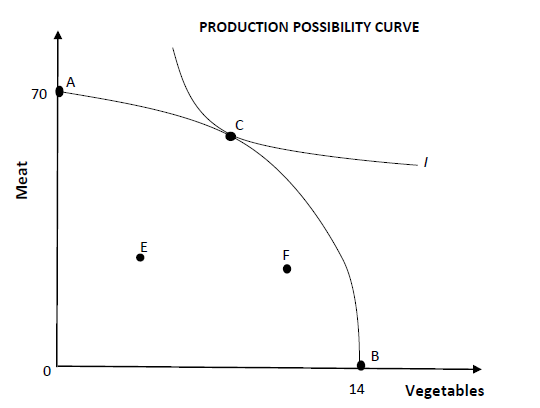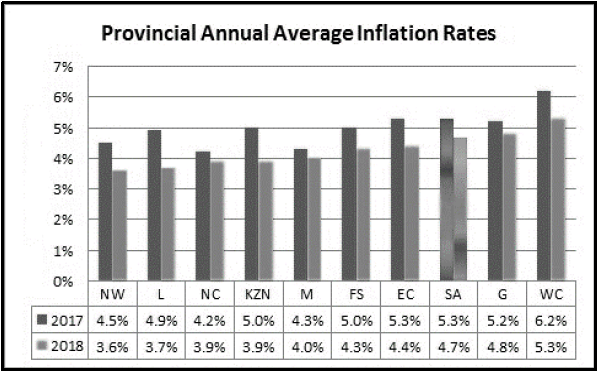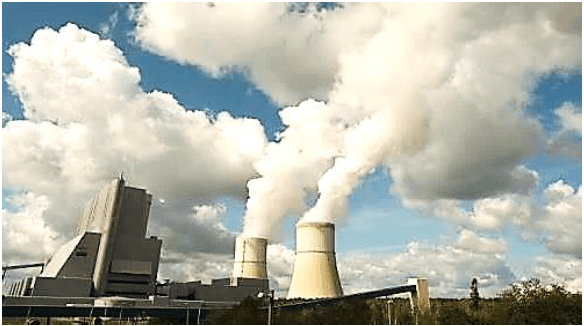Economics Paper 2 Grade 12 Questions - NSC Past Papers And Memos September 2020 Preparatory Examinations
Share via Whatsapp Join our WhatsApp Group Join our Telegram GroupINSTRUCTIONS AND INFORMATION
- Answer FOUR questions as follows in the ANSWER BOOK:
SECTION A: COMPULSORY
SECTION B: Answer TWO of the three questions.
SECTION C: Answer ONE of the two questions. - Answer only the required number of questions. Answers in excess of the required number will NOT be marked.
- Number the answers correctly according to the numbering system used in this question paper.
- Read the questions carefully.
- Start EACH question on a NEW page.
- Leave 2–3 lines between subsections of questions.
- Answer the questions in full sentences and ensure that the format, content and context of your responses comply with the cognitive requirements of the questions.
- Use only black or blue ink.
- You may use a non-programmable pocket calculator.
- Write neatly and legibly.
QUESTIONS
SECTION A (COMPULSORY)
QUESTION 1 30 MARKS – 20 MINUTES
1.1 Various options are provided as possible answers to the following questions. Choose the answer and write only the letter (A–D) next to the question numbers (1.1.1–1.1.8) in the ANSWER BOOK, for example 1.1.9 D.
1.1.1 The short-run supply curve of the perfect competitor is that part of the MC curve which is above the … cost curve.
- total
- average total
- average variable
- marginal
1.1.2 The dynamics of economies start with …
- consumption.
- production.
- prices.
- markets.
1.1.3 Most markets do not adjust rapidly to changes in demand and supply due to a lack of …
- resources.
- information made available.
- immobility of factors of production.
- experience in production.
1.1.4 Goods which individuals can benefit from even if they do not pay for them, are called … goods.
- non-excludable
- non-rival
- collective
- merit
1.1.5 The … forms part of the monetary policy and is managed by the Reserve Bank to keep inflation within the range set by the Minister of Finance.
- administered inflation
- interest rates
- bank rate
- inflation targeting
1.1.6 During periods of inflation, consumers’ disposable income tends to …
- increase.
- multiply.
- decrease.
- stabilise.
1.1.7 An example of a product on which environmental tax is charged is …
- car tyres.
- floor tiles.
- seatbelts.
- shoes.
1.1.8 The … is an international agreement to manage nuclear waste.
- Kyoto Protocol
- Rotterdam Convention
- COP17
- Basel Convention (8 x 2) (16)
1.2 Choose a description from COLUMN B that matches an item in COLUMN A. Write only the letter (A–I) next to the question numbers (1.2.1–1.2.8) in the ANSWER BOOK, for example 1.2.9 J.
COLUMN A | COLUMN B | ||
1.2.1 | Long run | A | people lose confidence in the value of money |
1.2.2 | Price discrimination | B | financial grant to support the production of a good or service |
1.2.3 | Monopoly | C | all costs are variable |
1.2.4 | Subsidy | D | prices of imported goods are shown explicitly |
1.2.5 | CPIX | E | sustainable development that does not erode the environment |
1.2.6 | Producer Price Index | F | the firm is the industry |
1.2.7 | Hyperinflation | G | excludes mortgage interest costs |
1.2.8 | Green economy | H | buyers are charged different prices for the same product |
I | includes mortgage interest costs | ||
(8 x 1) (8)
1.3 Give ONE term for each of the following descriptions. Write only the term next to the question numbers (1.3.1–1.3.6) in the ANSWER BOOK.
1.3.1 Minimum profits that will prevent the business from leaving the market
1.3.2 A group of producers whose goal it is to form a collective monopoly to fix prices and limit supply
1.3.3 Goods that are highly desired for the general welfare of the people but not highly rated by the market
1.3.4 The ratio of GDP at current prices to the GDP at constant prices for a specific year
1.3.5 Creative continuity of the environment while ensuring that change is sympathetic to the quality of life for both present and future generations
1.3.6 Waste that is highly toxic and stays poisonous for a very long time (6 x 1) (6)
TOTAL SECTION A: 30
SECTION B
Answer any TWO of the three questions from this section in the ANSWER BOOK.
QUESTION 2: MICROECONOMICS 40 MARKS – 30 MINUTES
2.1 Answer the following questions.
2.1.1 List any TWO examples of community goods. (2)
2.1.2 How would perfect markets disadvantage consumers? (2)
2.2 Study the information below and answer the questions that follow.
INTERDEPENDENCE AND UNCERTAINTY In an oligopoly, no firm can take decisions on price independently. It is because the decision to fix a new price will create reactions among rival firms but rival reactions cannot be predicted accurately. [Source: economicdiscussion.net] |
2.2.1 Name ONE example of barriers to entry in an oligopoly. (1)
2.2.2 Give any non-price competition strategy used by oligopolists. (1)
2.2.3 Briefly describe the term oligopoly. (2)
2.2.4 Briefly explain tacit collusion by oligopolies. (2)
2.2.5 With the aid of a graph, explain the demand curve of an oligopolist. (4)
2.3 Study the graph below and answer the questions that follow.
2.3.1 At which point on the above graph are the demands of consumers met? (1)
2.3.2 What is represented at point E or F? (1)
2.3.3 Briefly describe the term indifference curve (I). (2)
2.3.4 Briefly explain the reason for the shape of the Production Possibility Curve above. (2)
2.3.5 How can negative externality be reduced using quantity control? (4)
2.4 Distinguish between natural and artificial monopoly. (8)
2.5 Evaluate the effectiveness of Cost Benefit Analysis (CBA) as a decision- making tool. (8)
[40]
QUESTION 3: CONTEMPORARY ECONOMIC TOPICS
40 MARKS – 30 MINUTES
3.1 Answer the following questions.
3.1.1 Name any TWO examples of natural disasters that can be a cause of cost-push inflation. (2)
3.1.2 Why are metropolitan areas in South Africa the most polluted? (2)
3.2 Study the graph below and answer the questions that follow.
[Adapted from Stats SA 2018]
3.2.1 Which province experienced the highest rate of inflation in the graph above? (1)
3.2.2 Which type of inflation excludes items with high volatile prices? (1)
3.2.3 Briefly describe the term inflation. (2)
3.2.4 Briefly explain the importance of measuring inflation. (2)
3.2.5 Examine the effects of inflation on supply and demand for bonds. (4)
3.3 Study the information below and answer the questions that follow.
CLIMATE CHANGE
Climate change is happening and is caused by human activity. Changes attributed to human activity can be seen as part of the natural variations in the earth’s climate and temperature.Climate change is happening and is caused by human activity. Changes attributed to human activity can be seen as part of the natural variations in the earth’s climate and temperature. [Source: https//:www,google.com] |
3.3.1 Identify the type of pollution in the picture above. (1)
3.3.2 Which international agreement has been implemented to deal with climate change? (1)
3.3.3 Briefly describe the term climate change. (2)
3.3.4 Briefly explain any measure that can be implemented to reverse climate change. (2)
3.3.5 Examine the negative impact of climate change on agriculture and food supply. (4)
3.4 Briefly explain increased consumption by households and investment spending as causes of demand-pull inflation. (8)
3.5 Why is biodiversity under threat? (8)
[40]
QUESTION 4: MICROECONOMICS AND CONTEMPORARY ECONOMIC ISSUES 40 MARKS – 30 MINUTES
4.1 Answer the following questions.
4.1.1 Name TWO types of costs used by economists as opposed to accountants. (2)
4.1.2 What could be the contributing factor for high rates of inflation in South Africa? (2)
4.2 Study the information below and answer the questions that follow.
TOTAL REVENUE AND MARGINAL REVENUE
|
4.2.1 Give a formula for calculating total revenue. (1)
4.2.2 At which level of output is the firm maximising revenue? (1)
4.2.3 Briefly describe the term marginal revenue. (2)
4.2.4 Explain how monopolists determine the production level. (2)
4.2.5 Use the information above and calculate the average revenue for unit 3. Show ALL calculations. (4)
4.3 Study the extract below and answer the questions that follow.
STAGFLATION Economic policy makers across the globe try to avoid stagflation at all costs. Stagflation could be experienced globally by many countries when world oil prices rise sharply. Stagflation is caused when a sudden increase in the cost of oil reduces an economy’s productive capacity, thereby increasing costs of production. It may also be caused by harsh regulations of markets, goods and labour combined with allowing central banks to print unlimited amounts of money. [Source: http//:economicshelp.org] |
4.3.1 Identify from the extract the cause of a sharp fall in inflation during the second quarter of 2020. (1)
4.3.2 Name ONE group of people mostly affected by high levels of inflation. (1)
4.3.3 Briefly describe the term stagflation. (2)
4.3.4 Explain wages as the cause of cost-push inflation. (2)
4.3.5 How can taxation be used to combat inflation? (4)
4.4 With the use of a graph, explain the effects of minimum wage. (8)
4.5 Examine the role of price expectation on inflation in South Africa. (8)
[40]
TOTAL SECTION B: 80
SECTION C
Answer any ONE of the two questions from this section in the ANSWER BOOK. Your answer will be assessed as follows.
STRUCTURE OF ESSAY | MARK ALLOCATION |
Introduction
| Max. 2 |
Body | Max. 26 |
Max. 10 | |
Conclusion
| Max. 2 |
TOTAL | 40 |
QUESTION 5: MICROECONOMICS 40 MARKS – 40 MINUTES
- Compare, without graphs, the market structure of a monopolistic competition with that of a perfect market focussing on the following:
- Nature of the product (8)
- Market information (8)
- Price determination and demand curve (10) (26 marks)
- Evaluate the importance of the South African competition policy in the operation of markets. (10 marks) [40]
QUESTION 6: CONTEMPORARY ECONOMIC ISSUES 40 MARKS – 40 MINUTES
- Discuss in detail how the government can ensure sustainable development. (26 marks)
- How does chasing for higher economic growth negatively impact on environmental sustainability? (10 marks) [40]
TOTAL SECTION C: 40
GRAND TOTAL: 150
